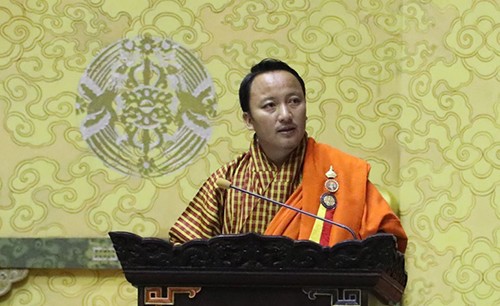The hydropower debt of Nu 160bn accounts for 74.2% of the total external debt
While the public debt has increased by Nu 225bn and the fiscal deficit has been calculated at Nu 19bn in the Fiscal Year (FY) 2021-22 budget as of March 31, 2021, Finance Minister Namgay Tshering said that it is not a worrisome situation.
The Finance Minister was responding to a query at the National Assembly session yesterday when asked on the sustainable measures taken up by the government on public debt policy and financial policy.
In response, Lyonpo Namgay Tshering shared to the house that the people should understand that the debt we have just now is not a debt that was made in three years by the current government and that the debt of Nu 225bn is the accumulated debt that has been there for more than 10 years.
He said the total public debt stock as of March 31, 2021 is about Nu 225bn, accounting for 120.5% of the GDP. Of the total public debt, Nu 215bn is external debt and about Nu 9bn is domestic debt.
Lyonpo added that the hydropower debt stock is about Nu 160bn, which accounts for 74.2% of the total external debt. The non-hydro debt is about Nu 55bn and is about 29.9% of the GDP.
“The non-hydro-to-GDP ratio was well within the Public Debt Policy threshold of 35%. The gross financing need (GFN) – the sum of fiscal deficit, principal repayments, and net lending— for FY 2021-22 is estimated at Nu 19bn,” Lyonpo said.
Lyonpo shared that as of March 31, 2021, external debt constituted 96% of the total public debt and accounted for 115.6% of the GDP and only 4% is from domestic debt.
“The external debt is mainly on account of borrowings for hydropower development and concessional credit from MDBs to finance infrastructure development,” Lyonpo Namgay Tshering said.
He added, “Of 96% of external debt, 75% is the hydropower debt and non-hydro related debt is at 26%, we are using this budget in development activities.”
According to the National Budget for Financial Year 2021-2022, the country’s external debt is projected to reach more than Nu 225bn by the end of June 2021, an increase of 5.8% from last year. In June last year, Bhutan’s external debt stood at more than Nu 213bn. Consequently, the debt to Gross Domestic Product (GDP) ratio is 120.9%.
The growth is mainly due to hydro loan disbursements of Nu 9bn for FY 2020-21, and budgetary loan disbursements of Nu 6bn mainly from ADB and World Bank during the FY.
The external debt to the GDP is projected to peak at 125.9% in FY 2022-23 before sliding to 113.7% in FY 2023-24. The capitalization of Interest During Construction (IDC) of Puna-II—estimated at about Nu 33bn will add to the debt stock if the project is commissioned in December 2022.
In addition, the projected loan disbursement for Kholongchu and Puna-I are also expected to contribute towards the increase in the ratio. However, the external debt to the GDP ratio is expected to fall in FY 2023-24 with the commencement of repayment for Puna II.
Meanwhile, the hydropower debt of Nu 160bn accounts for 74.2% of the total external debt.
“Hydropower debts are self-liquidating in nature,” Lyonpo Namgay Tshering said, adding that the government has a return on investment from hydropower debt stocks. And in the case of non-hydro debt, the government is kept accountable by the public debt policy. The government cannot exceed non-hydro power debt beyond 35% of the GDP. Non-hydro related debt is at 26%.
The external debt to the GDP is projected to further rise to 125.9% in the Financial Year 2022-23. The projected loan disbursement for Kholongchhu and PHPA-I are expected to contribute towards the increase.
However, the external debt to the GDP ratio is expected to fall to 113% in Financial Year 2023-24 with the commencement of repayment for PHPA-II. The first revised cost estimate for PHPA II in 2015 was approved at almost Nu 73bn, of which 70% is on loan.
According to the National Budget report, the Public Debt Policy sets thresholds for the non-hydro power debt at 35% of the GDP.
The ratio is expected to increase to 31.6% by the end of FY 2020-21 due to project-tied and program borrowings during the FY from ADB, World Bank, and JICA. The expected non-hydro borrowing for FY 2020-21 is Nu 6bn, increasing the non-hydro debt stock.
The non-hydro debt to the GDP ratio is projected to reach 32.7% in FY 2021-22, mainly caused by project-tied and program borrowings of Nu 6bn during the FY. However, the ratio is forecasted to fall after FY 2021-22.
The government resorts to domestic borrowing only if external concessional financing is inadequate to meet the gross financing need (GFN). In FY 2021-22, external concessional borrowings are expected to meet only 30.9% of the GFN.
Therefore, 69.1% of Nu 13bn has to be financed from the domestic market, which will be through the issuance of T-Bills and long-term government bonds, stated the report.
Kinley Yonten from Thimphu













